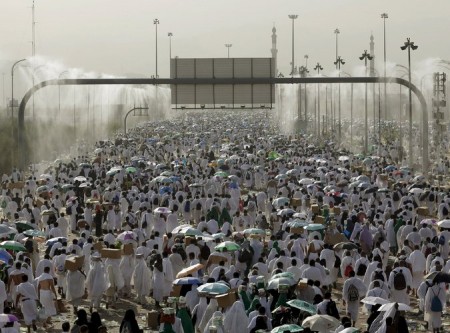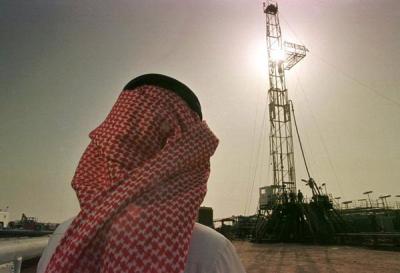November 12, 2015 – Saudi Arabia today submitted its carbon emission reduction pledge to the United Nations in advance of the climate summit in Paris. The Saudis were the last G20 country to submit. They are the world’s 14th largest carbon emitter. What they promised was to mitigate 130 million tons of CO2 by 2030. What they didn’t say was how much CO2 they will continue to produce nor the percentage of reduction from 2005 or earlier levels as we are accustomed to see from other country pledges.
How the Saudis intend to reduce their CO2 output is laid out as follows:
- Improve energy efficiency in three sectors, building, industry and transportation.
- Invest in renewable energy including solar photo-voltaics, solar thermal, wind, geothermal and waste to energy systems.
- Build the world’s largest carbon capture and sequestration plant aimed at taking 1,500 tons of CO2 out of the air daily.
- Increase use of natural gas rather than oil for energy.
- Conserve and recover methane from oil wells.
There is no mention of percentage reduction from baseline levels as found in other country’s pledges. So we don’t really have an easy frame of reference upon which to judge the Saudi decarbonization effort. And that may be a reflection of the challenge that oil dependent economies in nations like Saudi Arabia, Kuwait, United Arab Emirates, Bahrain, Oman and Qatar face in transitioning away from fossil fuels to a low carbon future.
For these countries the lack of diversified economies means all their eggs have been largely hatched in producing fossil fuels, the largest contributors to their gross domestic product (GDP). In Saudi Arabia 45% of GDP comes from oil and gas which also accounts for 90% of export earnings. In Kuwait the numbers are 60 and 95% respectively. United Arab Emirates’ oil and gas accounts for 40% of GDP which is better but not great. In all cases these are unbalanced economies that are being asked to participate in a global effort to consider their primary means of income as a liability, and to reduce the amount of carbon dioxide they produce from the burning of fossil fuels, their livelihoods.
It doesn’t get any easier for these nations even as and if they transition to lower carbon footprints. That’s because they are situated in a region of the planet that scientists suspect will be more adversely effected by climate change than most. The forecast is an oncoming climate apocalypse for the Middle East. By 2100 warming will send temperatures to levels where outdoor habitability will be next to impossible. Precipitation is expected to decline. Consider today. The region is already challenged by high temperatures, aridity and heat indices that reach as high as 70 Celsius (158 Fahrenheit) in summer. How much higher can they go? Now add to this freshwater deficits and rising sea levels and you can see these nations facing a potential end of existence by century end. Whole nations becoming climate change refugees.

So how can these fossil fuel dependent, climate sensitive states survive both in the near future and for the long term?
There are no easy answers, particularly those to century-end climate forecasts, but here in the present and near future they can implement policies to help with mitigation, adaptation and create a sustainable low-carbon alternative to the present. A list of appropriate actions follows:
- Change from the current fossil fuel paradigm. Implement transition through a series of stages. First cap all new exploration. On existing production introduce mandatory carbon sequestration practices. Ramp down existing production as alternative forms of energy come on line. Plan for the stranding of fossil fuel “assets” for the indefinite future, or until technologies are developed for zero-emissions fossil fuel production and use.
- The most important first step away from fossil fuels is to price carbon. The amount should be sufficiently high and progressively higher over time to ensure an orderly passage from fossil fuels to low-carbon alternatives.
- Invest in low-carbon energy technologies, conservation initiatives, building retrofits and other infrastructure adaptation as well as climate changing mitigation and adaptation projects. Plan for rising sea levels through infrastructure builds and rehabilitation for populations at risk.
- Encourage low-carbon innovation on a national scale through investment in the creation of new businesses and restructuring of old ones. Invest in education and skills training, encourage invention, and reform labour and market policies to support sustainable low-carbon standards.
- De-carbonize electrical energy. Work with industry partners and fund all available forms of renewable energy that fits with the geography and potential capacity of the nation. Include solar photo-voltaic and thermal, wind, tidal, and geothermal with concomitant investments in storage technology. Invest in distributed energy and microgrids. Plan and execute closing of existing fossil fuel-based power plants as new power sources become available.
- Develop non-energy intensive desalination infrastructure to de-carbonize the technology while addressing freshwater scarcity. Current commercial desalination technology needs to be less carbon intensive.
- Develop a comprehensive transportation strategy with funding to deliver a transition to low-carbon mobility. Create disincentives for consumers to opt out of fossil-fuel passenger vehicles. Stimulate the purchase of electric and fuel-cell vehicle purchases. Invest in nationwide sustainable urban mass transit for cities and inter-urban connectivity.
- Create reciprocal environmental goods agreements with trading partners. Encourage domestic manufacturers to produce low-carbon products or deliver sustainable services. Ensure that purchases made by domestic businesses come from low-carbon product manufacturers and service providers.
- Grow local using sustainable agricultural and land management practices. Importing food adds significantly to a nation’s carbon footprint. Invest in better land management, irrigation and sequestration technologies. Ensure minimal food loss through improvements to harvest and storage technologies. Where forest ecosystems exist expand them to optimize natural carbon sink capacity.
Already United Arab Emirates is diversifying its economy to move away from heavy emphasis on fossil fuels. Saudi Arabia is attempting to follow. Will Kuwait, Bahrain, Qatar and others do so as well? For these fossil-fuel producing and dependent nations to continue to flourish in the face of growing action to restrict atmospheric carbon, the ability to make the paradigm shift to low-carbon seems next to impossible. And yet it can be done. Let’s hope through both domestic initiatives and the assistance of countries with technology solutions that the prognosis improves assuring their sustainable survival.









